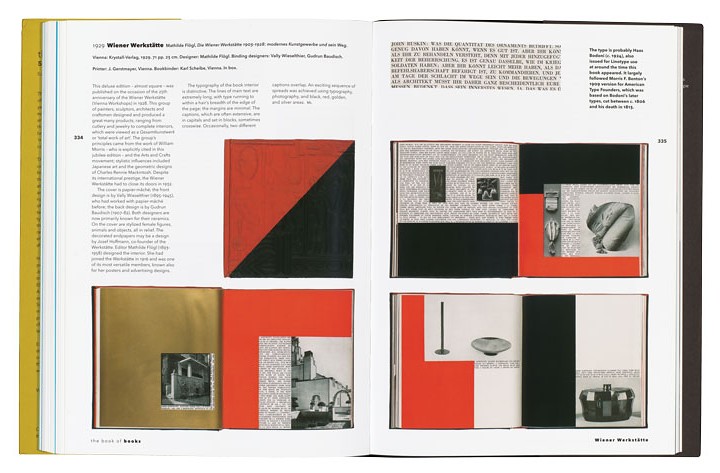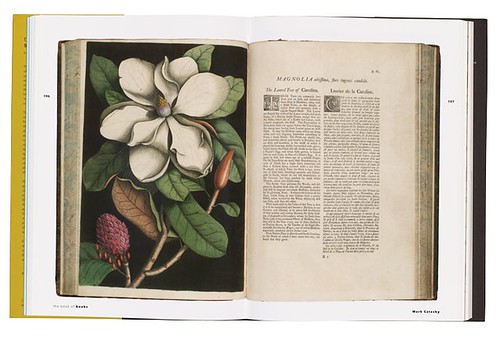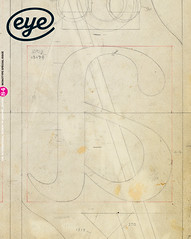Autumn 2012
Pages from the library of libraries
The Book of Books: 500 Years of Graphic Innovation
Edited by Mathieu Lommen, Design and layout by Cees W. de Jong, VK Projects, Thames & Hudson, £42

Graphic design, devoted as it is to re-framing text and image, thrives as an object of representation itself. A poster, a magazine cover, or a spread from a book often looks better scaled down and flattened out into an image of itself than it does in the bustling habitat of street, shop, or breakfast table – or even in the glamorous confines of a museum exhibition. In a glass case, the faded pages of an original Bauhaus pamphlet or a book by El Lissitzky struggle mightily against the memory of those same leaves in reproduction, where the surrounding whiteness of the page juices up the energy of the copy.
Juicy indeed is Mathieu Lommen’s comely The Book of Books: 500 Years of Innovation. Lommen, a curator at the Amsterdam University Library (Universiteitsbibliotheek Amsterdam), has selected dozens of volumes from its world-class collection to tell the story of Western book design, from the invention of movable type printing in fifteenth-century Germany to today’s high-intensity production. Immaculate photographs of printed texts – most of them open to a full spread – beckon the reader to consider each work as physical artefact, as graphic construction, and as fully viewable content. For each featured volume a same-size sample of text creates an intriguing window into the scale of the original.
Organised in a loose march of time, the book’s sections range, in non-dogmatic fashion, from broad time periods (‘The sixteenth century’) to thematic groupings (‘Decoration and illustration’, ‘Private presses and traditional book typography’). In the chapter devoted to printing’s first century, we learn about producers both legendary and obscure, from Nicolas Jenson (the French-born engraver who helped transfer the nascent technology of type from Mainz to Venice) to Gheraert Leeu (an Antwerp printer who was murdered by a punchcutter in 1492).
Stunning works of natural science dominate the chapter on the eighteenth century, where we encounter detailed illustrations of Caribbean flora ordered by King Louis XIV, and vivid observations of insect life made by the German-Swiss naturalist Maria Sibylla Merian in Surinam.
Spread of a magnolia illustration by Mark Catesby from his book The Natural History of Carolina, Florida, and the Bahama Islands, 1729-47.
Top: spread from The Book of Books, showing pages from Mathilde Flögl’s Die Wiener Werkstätte.
The section on avant-garde graphics presents famous works by El Lissitzky, Karel Teige, Piet Zwart and A. M. Cassandre alongside little-seen pieces by the Italian Futurist Francesco Cangiullo and the French typographer Francis Thibaudeau.
The final chapter, flatly dubbed ‘Post-Modernism’, includes high-octane publications by design-world superstars such as Paula Scher and Stefan Sagmeister, as well as such stately endeavours as Derek Birdsall’s Common Worship: Services and Prayers for the Church of England (2000; see Eye 83) and Joost Grootens’ Vinex Atlas (2008; see Eye 78).
While the reproductions are the chief players in this book, concise scholarly commentary provides context for each piece. The text, by Lommen and a supporting cast of writers, is stocked with information that will surprise and educate the most hard-boiled bibliophile. The authors’ formidable knowledge base derives, in part, from having access to all those real books.
Spread showing pages from El Lissitzky and Vladimir Mayakovsky’s Dlja golosa, 1923.
The material heft of the Amsterdam University Library’s vast collection infuses The Book of Books with special gravity. Knowing that the works depicted inside these covers are stored together in protective custody offers reassurance in our age of orange alerts for the health of print. We can marvel at the relative lightness of this volume, which – while weighing in at an imposing three kilos or so – is nonetheless a handy sampling of the dozens of books featured inside, each choice standing in place of countless other worthy works waiting in the same library.
The library’s collection dates back to 1578, when Protestants seized books from monastic collections, establishing a new city library that was accessible to citizens and students. The phrase ‘the book of books’ commonly refers to the King James Bible, introduced in 1611 – a continuous bestseller, which contributed hugely to the spread of the Protestant religion. By endowing his own book with such a freighted title, Lommen speaks with solemnity, as if the door might soon close upon his beloved subject. The selection of works is deliberately canonical, establishing a bloodline of key works that each deserves a slot in recorded history. By and large, the books gathered here announce not so much the personal taste of the editor as a history of first moves, bold disruptions, and assertions of established authority.
We learn herein that Giambattista Bodoni’s collected works of Virgil (1793) was intended not to be read but to demonstrate the elite status of its owner (the volume is too bulky for comfortable reading). Could something similar be said for The Book of Books? I think not. While it is grand in scale, this generous volume offers a warm welcome to lovers of print. The scaled-up pages accommodate reproductions that are big enough for easy examination, approximating the presence of the artefact, while still offering that thrilling frisson of difference where image exceeds reality.
Cover of The Book of Books, showing pages from Mathilde Flögl’s Die Wiener Werkstätte, published for the 25th anniversary of the Vienna Workshops.
Eye is the world’s most beautiful and collectable graphic design journal, published quarterly for professional designers, students and anyone interested in critical, informed writing about graphic design and visual culture. It is available from all good design bookshops and online at the Eye shop, where you can buy subscriptions, back issues and single copies of the latest issue. You can see what Eye 84 looks like at Eye before You Buy on Vimeo.




